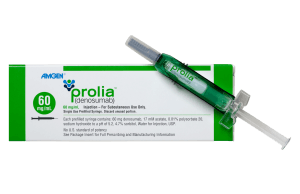 The first time I saw Inside Out, I was blown away by their depiction of mental health and their gentle handling of depression in particular. It is beautiful and brilliant, and it is so easy for both kids and adults to understand. In “Inside Out 2,” Riley is entering puberty and navigating new emotions, such as anxiety. While anxiety can be seen as a villain as it causes a panic attack and fills the protagonist with self-doubt, the film highlights stress and anxiety for what they really are: natural, protective emotions that help to manage real threats but sometimes get out of hand!
The first time I saw Inside Out, I was blown away by their depiction of mental health and their gentle handling of depression in particular. It is beautiful and brilliant, and it is so easy for both kids and adults to understand. In “Inside Out 2,” Riley is entering puberty and navigating new emotions, such as anxiety. While anxiety can be seen as a villain as it causes a panic attack and fills the protagonist with self-doubt, the film highlights stress and anxiety for what they really are: natural, protective emotions that help to manage real threats but sometimes get out of hand!
Imagine anxiety as your brain’s way of getting ready for something it thinks might be scary or challenging in the future. It’s like when you know you have a big event, exam, or work presentation coming up, and you start to feel nervous. This feeling isn’t just in your head; it affects your emotions, your body (like making your heart race), and even how you act (like avoiding things). It’s your brain’s way of trying to prepare you for what it thinks might be a tough situation.
The good news is that managing anxiety is totally possible with the right strategies. Let’s do a deep dive into anxiety and how to manage it so we can learn to work with it rather than fight against it – just like Riley does!
The Nature Of Stress And Anxiety: What Is The Difference?
While anxiety is a natural emotion that can protect your mental and physical health, it can become problematic when it escalates beyond normal levels.
There are four levels of anxiety: mild, moderate, severe, and panic. Each level has its own characteristics, and sometimes these can overlap.
Mild anxiety is a normal part of life and can actually be beneficial, helping people stay alert and focused. People experiencing mild anxiety might feel restless or irritable. They may also show small nervous habits like fidgeting, tapping their fingers, or biting their nails.
As anxiety becomes moderate, it starts to interfere with the ability to focus clearly on the surroundings. This level of anxiety can make thinking, learning, and solving problems more challenging but not impossible. Physical symptoms such as sweating, increased heart rate, and breathing more quickly may occur. People might also feel headaches, stomach upset, the urge to use the bathroom more frequently, shaky hands, or a trembling voice, often without realizing these are linked to their anxiety.
Severe anxiety significantly narrows a person’s focus, making them concentrate only on specific details or feel scattered. At this stage, they might not notice their environment even when pointed out and may seem confused or out of touch. Severe anxiety makes learning and problem-solving extremely difficult. Physical symptoms become more intense, like hyperventilation, a pounding heart, sleeplessness, and a sense of doom.

So, what is the difference between stress and anxiety? Stress is the sensation of physical or emotional strain that usually happens because of something outside of us, called a stressor. Anxiety brings about similar feelings as stress, but what’s different is that these feelings linger even after the stressor is no longer there.
The Role of Friends and Family Members in Managing Anxiety
Riley is blessed in the movie as she appears to have some pretty great parents. They help her navigate the complexities of adolescence and really showcase how important parental support can be at difficult times.
Family relationships are important for our well-being at every stage of life. Good family relationships can help us manage stress and anxiety, improve our self-esteem, and promote healthier habits. However, if the quality of these relationships is poor or if caregiving becomes too demanding, it can harm our well-being, which is important to be aware of.
Strong family bonds boost self-confidence as both children and parents learn to value themselves and each other. These interactions also prepare kids for future parenting by teaching them caregiving skills they may use in their own families. Spending time together helps develop conflict resolution skills, teaching everyone how to communicate effectively and solve problems constructively.
How can I encourage my family to communicate more openly?
Begin by creating a friendly and safe space where everyone can comfortably share their thoughts and feelings. Listen well, be empathetic, and don’t judge. Encourage family members to speak up by asking open-ended questions and really caring about what they say.
How can I help a family member with anxiety?
The first step to helping someone with anxiety is to listen with an open mind. Often, simply being present and listening can make a significant difference. Show them that you’re there for them without rushing to solve their issues. Educate yourself on anxiety: Gaining knowledge about anxiety and its impact can improve your empathy supportiveness.
Diet and Lifestyle Factors in Managing Anxiety Long-Term
Some research suggests that what we eat and drink can influence our emotions. However, figuring out what to eat can be tough as it is challenging to focus on our diet when dealing with mental health struggles. These suggestions might help us decide on what to eat and drink, but they’re just a guide. They might not work for everyone, especially if you’re not feeling well—and that’s okay.
Balance Blood Sugar Levels
When your blood sugar is lower than normal, you might feel tired, grumpy, or a bit down. Eating regularly and choosing foods that give off energy slowly can help keep your sugar levels steady. One of the easiest swaps to make for keeping blood sugar a bit more stable is swapping white refined carbohydrates for brown non-refined carbohydrates. For example, swap white bread for wholegrain bread, white rice for brown rice, and white pasta for wholegrain pasta. Add in a bit of good quality protein with every meal, and you’ll keep your blood sugar happy and your mood a bit more regulated.
Stay Hydrated
If you’re dealing with a mental health issue, you might find it tough to keep up with drinking enough fluids. Dehydration can make it difficult to focus or think clearly, triggering stress and anxiety. Water, tea, juices, and smoothies can all keep you hydrated. Keep in mind that some might have caffeine or sugar, which can affect your mood in various ways. To manage your fluid intake, try tracking it. You could write it down or set a reminder on your phone.
Eat Fruits and Vegetables
Including a variety of fruits and vegetables in your diet provides important nutrients that support both mental and physical health. While fresh options can be pricey and take more time to prepare, alternatives like frozen, canned, dried, and juiced fruits and vegetables also contribute to your daily intake. These can be more affordable and convenient ways to meet your 5-a-day goal without causing unnecessary stress and anxiety.
Get Enough Protein
Eating a diet with more protein can benefit your mental health. Protein has amino acids, which your brain needs to make neurotransmitters, chemicals that help control your thoughts and emotions.
Protein-rich foods include:
- Legumes (like peas, beans, and lentils)
- Nuts and seeds
- Milk
- Fish
- Eggs
- Cheese
- Lean meats
If you’re having trouble getting enough protein, consider adding a dollop of yogurt to your breakfast cereal or a tin of tuna to your salad. Or enjoy a handful of nuts and seeds!
Cut Back On Caffeine
Caffeine is found in tea, coffee, chocolate, cola, and energy drinks. It’s a stimulant, which means it can give you a quick energy boost. However, it can also make you feel stress and anxiety or mess with your sleep, especially if you consume it before bedtime. It can also really increase the feeling of uneasiness if you have anxiety. If you think caffeine is affecting your mood, try cutting back gradually. For instance, alternate between caffeinated and decaf drinks.
Eat Healthy Fats
Your brain needs certain fatty acids like omega-3 and omega-6 to function properly. You can get these healthy fats from:
- Nuts and seeds
- Avocados
- Oily fish like sardines and mackerel (tinned options can be more affordable)
My lunchtime salad is the easiest way to incorporate these into my diet. You can throw all these things into it!
Foods for a Healthy Gut
Your gut can sometimes show how you’re feeling. Stress and anxiety can make your digestion speed up or slow down, leading to issues like bloating, constipation, or reduced appetite.
Eating foods that help digestion can also be beneficial. Include more fruits, vegetables, and whole grains in your diet. Pulses like beans, peas, and lentils, whether canned or dried, are great choices. Probiotics, found in foods like yogurt, tempeh, and kimchi, can also support a healthy gut.
Avoid Alcohol
Drinking too much alcohol can mess with brain chemicals that help keep us mentally healthy. Some people with mental health issues might turn to alcohol to cope with tough emotions, but it only provides short-term relief. In the long term, it can actually increase levels of anxiety.
Exercise and Stress Relief
Physical activity can increase the production of endorphins, the brain’s feel-good chemicals. This is often called a “runner’s high,” but any activity like playing tennis or hiking can create the same effect. It also reduces stress’s negative impacts. Exercise helps your body manage stress and anxiety by simulating stress effects, like the fight-or-flight response, and letting your body practice handling them. Remember, any physical activity is better than none, so choose something you like and go easy on yourself if you don’t quite meet your goals right away.
Build Good Sleep Habits
Getting good sleep is super important for staying healthy, but we often overlook it when life gets busy.
To build good sleep habits, try going to bed at the same time every night to help your body clock stay on track. Avoid caffeine and screens before bedtime since they can mess with your sleep. The blue light from phones and computers can make it harder to fall asleep, so turn them off a couple of hours before bed. Make your bedroom a peaceful place to sleep by keeping it cool, dark, and quiet. If you find it hard to sleep, try relaxing with deep breathing or meditation. Aim for at least seven hours of good sleep each night by making rest a priority in your life.
Practice Self-Care
Self-care isn’t selfish—it’s crucial for keeping your body, mind, and emotions healthy. When you take care of yourself, you’re better equipped to help others. You can’t give from an empty cup, so make sure to set aside time for self-care activities that refresh your body, mind, and soul.
Set Boundaries
Setting boundaries is helpful for stress and anxiety that are triggered by factors outside yourself that may actually be manageable. When you clearly communicate your limits, others will know what you are comfortable with and adjust how they act. People who don’t respect your boundaries might not be the best to keep in your life. To set boundaries, start by thinking about what’s most important to you. This means figuring out both your personal and work priorities. Knowing your priorities helps you decide what boundaries to set and where you might be willing to compromise.
Knowing how to politely say no is important to keep clear boundaries. It might be hard for some people, but remember that it’s okay to turn down certain requests. For instance, if you’re invited to a meeting during your lunch break, it’s reasonable to decline so you can have some time to relax.
Practical Strategies for Managing Anxiety Immediately
Grounding techniques work by shifting our focus from stress and overwhelming thoughts to what’s happening around us. We do this by using our senses, like touching an object, listening to calming sounds, or paying attention to our breathing.
You can practice grounding anywhere, anytime, because the goal is to keep your mind and body in sync. By focusing on the present, we lessen our brain’s stress response, which can lead to less anxiety and clearer thinking.
Deep Breathing Exercises
Deep breathing is a simple yet effective grounding method. By focusing on your breath, you can slow down your heart rate and calm your mind. To practice:
- Sit comfortably and close your eyes.
- Breathe in through your nose for four counts.
- Hold your breath in your lungs for another four counts.
- Breathe out slowly through your mouth for six counts. Repeat until you feel relaxed.
Body Scan Meditation
Body scan meditation helps you notice physical sensations and release tension, making you feel more connected to your body and less stressed. To try it:
- Lie down or sit comfortably.
- Close your eyes and take deep breaths.
- Slowly move your awareness from your head to your toes, noticing any tension or discomfort.
- As you find these areas, breathe into them and imagine the tension melting away.
The 5-4-3-2-1 Technique
This grounding exercise is one of my favorites as it can be easily used by kids, teens, and adults alike to bring you back to the present during an anxiety attack or meltdown. The 5-4-3-2-1 technique involves:
- Naming five things you can see
- Feeling four things you can touch
- Naming three things you can hear
- Naming two things you can smell
- Naming one thing you are tasting at that moment.
Sensory Grounding
Sensory grounding involves using your senses to stop an anxiety attack. Try these methods:
- Hold a textured item like a rock or fabric and focus on its feel.
- Listen to calming music or nature sounds and pay attention to each note.
- Smell something soothing, like lavender or eucalyptus.
Using touch can be a powerful way to stay grounded. Here are a few methods:
- Put your hands under running water and notice the sensation and temperature.
- Hold an ice cube and focus on the cold feeling as it melts.
- Press your feet firmly into the ground and feel the earth’s support.
When should you use grounding techniques?
You can use mindful grounding techniques whenever you feel anxious, overwhelmed, or disconnected, but they are especially helpful during panic attacks. Concentrating on the present
If You Feel Too Overwhelmed
When experiencing anxiety, it’s okay to take some time to monitor your feelings. Maintaining good eating, sleeping, and exercise habits can really help, as can using coping skills and self-help methods. However, if at any time you don’t feel like yourself, that’s a valid reason to consider seeking treatment. Some reasons you might seek help include experiencing physical symptoms related to anxiety, struggling to do what you want or need to do, or feeling unable to make important life decisions due to fear. Trust your instincts about when to reach out for support.
Always remember there is no shame in seeking support whenever you need it. As social beings, we thrive when we seek support! September is Suicide Prevention Month, which raises awareness about the 11th leading cause of death in the US, as well as other mental health conditions in general. For help and resources, the SAMHSA National Helpline is a confidential mental health information and referral service that is available 24/7, and counselors at the 988 Suicide and Crisis Lifeline are on call 24/7 to voice call, text, or chat.
Common Questions About Stress and Anxiety
How to be mentally stable?
There is no one way to be mentally stable. Every individual has different issues and different ways of addressing them. However, following some of the tips in this article for long-term mental health improvements could go a long way.
Is mental illness preventable?
Although major psychiatric disorders like schizophrenia, bipolar disorder, and autism, which have biological roots, cannot currently be prevented, there are numerous strategies to lower the occurrence of common mental health issues such as anxiety, depression, and substance abuse.
What are the signs of a breakdown?
Common indicators of a nervous breakdown include feelings of anxiety or depression, which may manifest as low self-esteem, fearfulness, irritability, constant worrying, and a sense of helplessness. Individuals might also experience anger outbursts, withdraw from family and friends, or lose interest in activities they once enjoyed. Physical symptoms like difficulty breathing and uncontrollable crying can occur, along with more severe thoughts of self-harm or suicide.
What are the symptoms of mental exhaustion?
Aside from the brain fog and difficulty focusing, mental exhaustion can lead to physical symptoms like difficulty moving, headaches, and stomach issues. You might notice changes in appetite and a heavy, fatigued feeling in your body. Even after a full night’s sleep, you could still feel very tired.
















